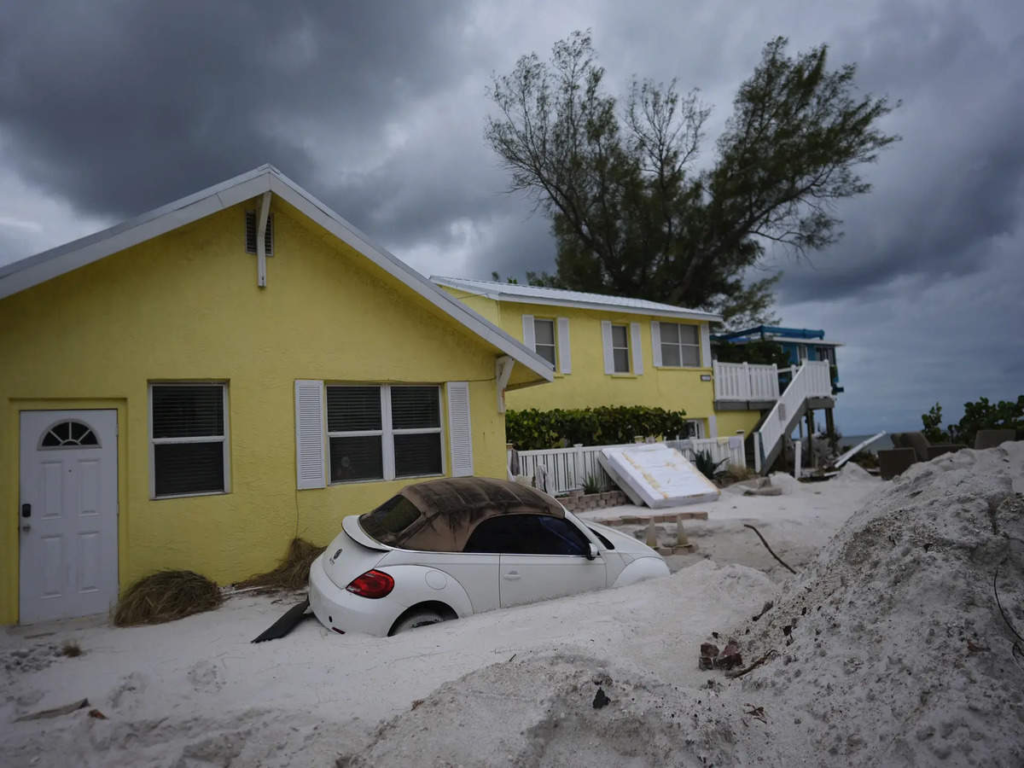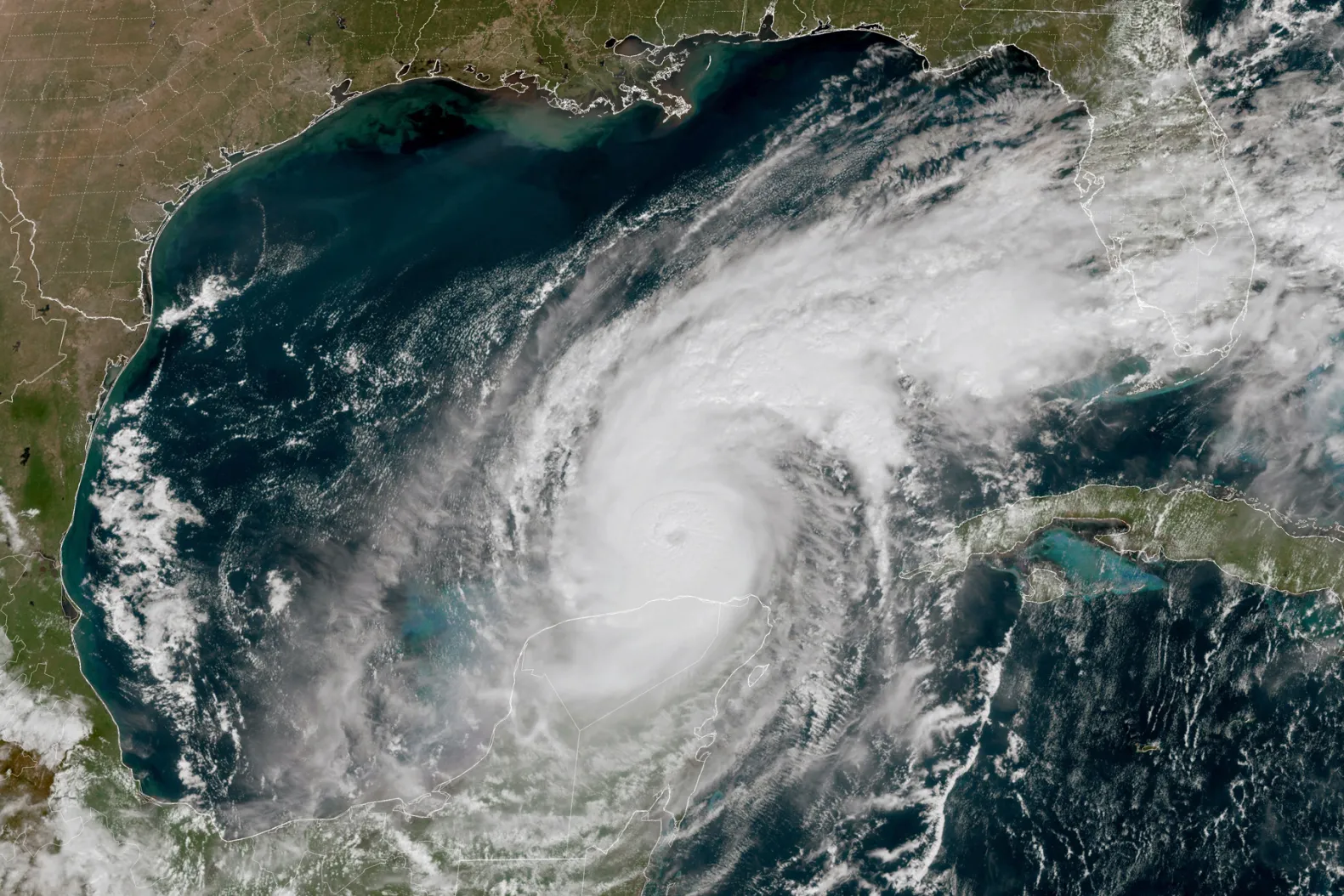NASA astronaut Matthew Dominick has captured breathtaking footage from the International Space Station (ISS) that highlights the terrifying power of Hurricane Milton, a massive Category 5 storm rapidly approaching Florida.
The video, shot from the window of the docked Dragon Endeavour spacecraft, offers a unique perspective of the storm as it churns over the Gulf of Mexico.
This visual spectacle has captivated viewers worldwide, while simultaneously serving as a sobering reminder of the destructive forces Mother Nature can unleash.
A Glimpse of Hurricane Milton From Space
The timelapse video, shared by Matthew Dominick on social media, provides a sweeping, almost surreal view of Hurricane Milton as seen from space. The footage was captured using a 1/6400-second exposure, a 14mm lens, and a 0.5-second interval.
Read : Hurricane Helene Hits Georgia After Lashing Florida Coast: Watch
As the ISS soared above the powerful storm, the time-lapse sequence condensed the intense atmospheric activity into a visually smooth representation, making viewers feel as though they were flying directly over the hurricane.
Read : ISS Shares Video of Hurricane Beryl from 400 km Above Space: Watch
Dominick’s post quickly went viral, garnering millions of views and comments. Many praised the astronaut for offering a rare and alarming look at such a massive natural event from a perspective only a handful of people have ever experienced.
One user commented on the “distinct eye formation” of the hurricane, while another pointed out the chilling beauty of the storm, noting how it serves as both a mesmerizing sight and a stark warning of the impending danger.
Timelapse flying by Hurricane Milton about 2 hours ago.
— Matthew Dominick (@dominickmatthew) October 8, 2024
1/6400 sec exposure, 14mm, ISO 500, 0.5 sec interval, 30fps pic.twitter.com/p5wBlC95mx
The footage has stirred discussions about the scale and intensity of hurricanes, as viewers attempted to comprehend the massive storm’s reach. Hurricanes, especially Category 5 storms like Milton, can stretch hundreds of miles across, with wind speeds exceeding 157 mph.
In the video, the storm’s swirling clouds and central eye appear as a giant, dominating force, its outer bands radiating outward in all directions. The calm, high-altitude vantage point of the ISS contrasts sharply with the chaos unfolding below, where coastal regions of the United States brace for impact.
Dragon Endeavour’s Role and Mission Impact
While the breathtaking timelapse has captured the world’s attention, Hurricane Milton’s effects are not limited to ground-level destruction. NASA’s Dragon Endeavour spacecraft, which transported Dominick, Michael Barratt, Jeanette Epps, and Alexander Grebenkin to the ISS in March, was scheduled to return to Earth on October 7.
However, due to the hurricane’s trajectory and the potentially dangerous conditions along its path, the mission has been delayed, with Endeavour now set to undock from the ISS on October 13.
Dragon Endeavour is a vital component of NASA’s Crew Dragon program, operated in collaboration with SpaceX. Its primary mission is to transport astronauts to and from the ISS, facilitating scientific research, experiments, and other essential tasks. The spacecraft’s delay due to Milton’s threat underscores how extreme weather events, especially hurricanes, can disrupt even space missions.

This delay adds to the logistical challenges that NASA and SpaceX face during hurricane season. With the potential for unpredictable storm paths and dangerous conditions, both organizations must constantly reassess safety protocols to ensure the well-being of astronauts and the success of their missions.
The decision to delay Endeavour’s return highlights the delicate balance between space exploration and the realities of life on Earth, where natural forces can unexpectedly impact even the most well-planned operations.
While the postponement is frustrating for the astronauts aboard the ISS, who eagerly anticipate their return to Earth, safety remains the top priority. NASA has confirmed that the decision to delay was based on ensuring a secure landing site and avoiding any risk posed by Hurricane Milton.
As Milton nears the Florida coast, NASA and SpaceX will continue to monitor the situation closely, adjusting their plans accordingly to ensure the crew’s safe return.
Hurricane Milton’s Threat to Florida and Beyond
Hurricane Milton is no ordinary storm. It has rapidly intensified in the Gulf of Mexico, reaching Category 5 status, with winds of over 160 mph and the potential to cause widespread devastation.
As the storm barrels toward Florida, millions of residents are being urged to evacuate coastal areas, with a state of emergency declared in 51 of the state’s 67 counties. Governor Ron DeSantis has stressed the importance of taking the storm seriously, warning that it could be one of the most destructive hurricanes to ever strike west-central Florida.
The National Weather Service has issued dire warnings about the potential storm surge, which could reach up to 15 feet in some areas. Combined with torrential rainfall and hurricane-force winds, this surge poses a significant threat to both life and property.
Low-lying regions, especially along Florida’s Gulf Coast, are at the highest risk, as floodwaters could inundate homes and infrastructure, cutting off vital transportation routes and isolating communities.
Energy infrastructure is also at risk, with power plants, transmission lines, and fuel terminals all vulnerable to damage from flooding and high winds.
Florida’s electrical grid, which has been tested by previous hurricanes, faces another critical challenge in the coming days. Prolonged power outages could leave millions without electricity, exacerbating the humanitarian crisis and delaying recovery efforts.

Hurricane Milton’s impact won’t be limited to Florida. Georgia, Alabama, and the Carolinas are also in the storm’s potential path, with forecasters predicting that it could maintain its strength as it moves inland. Widespread flooding, wind damage, and tornadoes are all possibilities as the storm makes its way across the southeastern United States.
Emergency responders across multiple states are mobilizing in anticipation of the storm’s arrival, with evacuation centers being prepared and supplies being distributed to areas likely to be affected.
As with many recent hurricanes, Milton is part of a broader trend of increasingly intense and destructive storms. Climate scientists have long warned that warmer ocean temperatures, driven by climate change, are fueling stronger hurricanes, making them more frequent and more devastating.
Hurricane Milton is a stark reminder of the growing dangers posed by extreme weather events, and the urgent need for communities, governments, and scientists to adapt to these new realities.
While millions of people prepare for Milton’s arrival, the timelapse video captured by Matthew Dominick serves as both a visual record and a chilling testament to the storm’s raw power.
From the calm of space, the footage offers a glimpse into the fury of nature, its swirling clouds and eye formation serving as a reminder of the fragility of life on Earth in the face of such overwhelming forces.
As Milton bears down on Florida and the southeastern United States, the world watches with bated breath, hoping that the worst-case scenarios can be avoided. But the video, shared from the International Space Station, underscores the enormity of the challenge ahead.
It’s a sobering realization that while space exploration continues to push the boundaries of human achievement, we remain deeply connected to the planet’s natural cycles—both beautiful and destructive.

